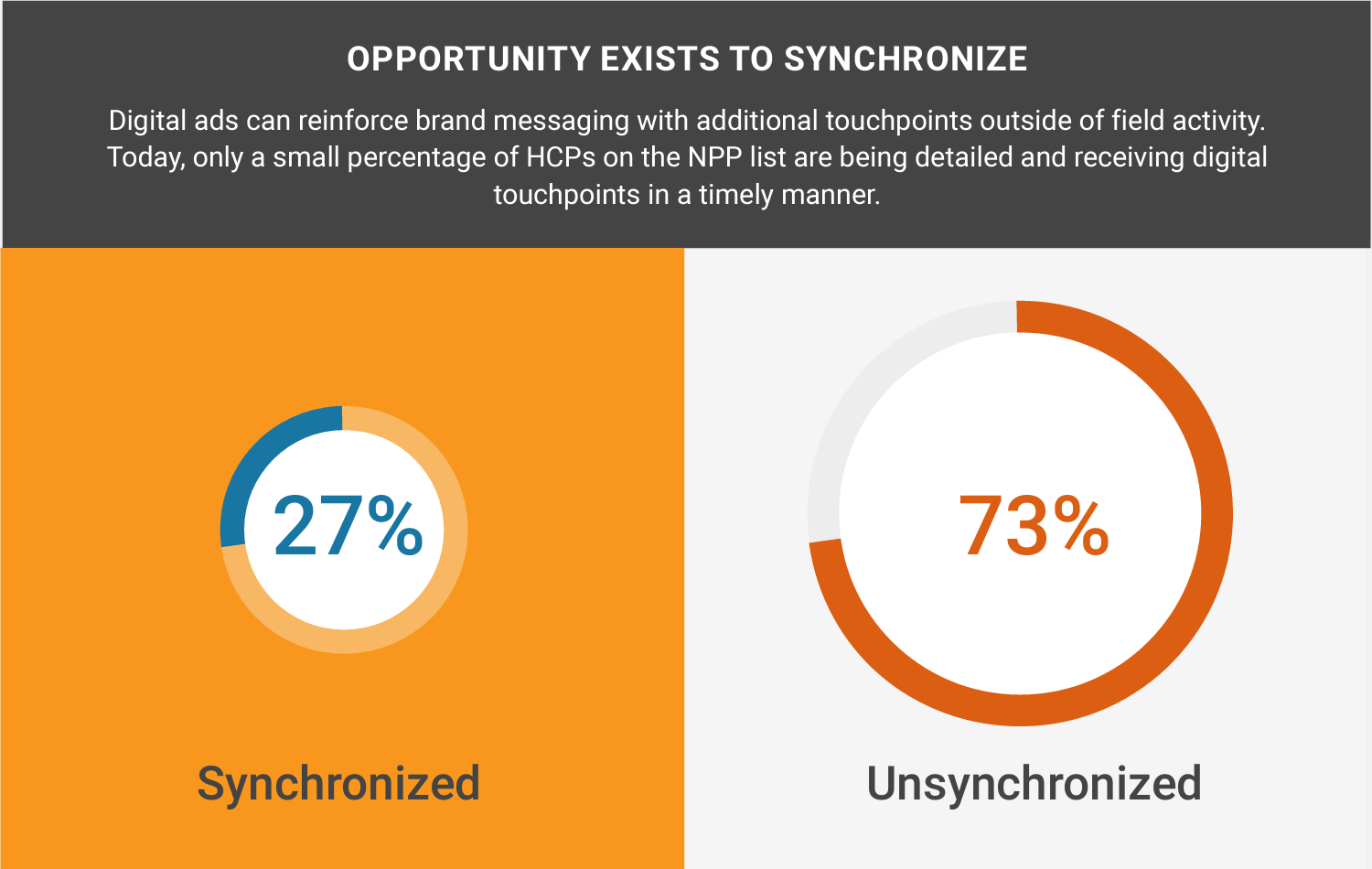Industry Report
Synchronizing Sales and Marketing: Boost Campaign Effectiveness by 23%
2023 Trends in HCP Omnichannel Engagement Report
Only 27% of healthcare providers (HCPs) engaged by field teams are also exposed to digital media within a three-month window. Yet, this timely combination of touchpoints can have a powerful impact on your marketing campaigns.
Synchronization – the close and timely coordination of field engagements and digital advertising – helps marketers and field teams maximize efforts across their organizations. Based on a meta-analysis of HCP campaigns, brands that do this well are engaging HCPs more effectively and experiencing a 23% increase in marketing effectiveness compared to all HCP campaigns.
Although advantageous, coordinating these efforts is not always straightforward. These teams have traditionally operated as separate units – each with its own systems and processes. Removing these boundaries and creating a cohesive relationship between sales and marketing can strengthen your omnichannel strategy and generate opportunities that greatly impact and expand business.
Synchronization has room to improve
Today, 73% of HCPs are unsynchronized. Varied uses of non-personal promotion (NPP) lists across life sciences brands can contribute to the limited coordination between sales and marketing teams. For example, some brands use NPP lists to supplement field calls and increase the frequency of brand touchpoints, while others focus their digital marketing on HCPs who are not engaged by the field.
Many brands also develop their field and marketing lists separately, based on HCP affinities, data availability, and digital behavior. In addition, field teams may engage with HCPs based on prior relationships – who may or may not be on the NPP list.
By working together, marketing and sales teams can ensure that all detailed HCPs who are relevant for the NPP list are identified and added. Reviewing both NPP and field lists can narrow this gap to ensure that detailed HCPs are synchronized with the best combination of field and digital touchpoints to yield the greatest impact.

Synchronization increases marketing effectiveness
HCPs who were reached with both field force and digital marketing activities were exposed, on average, to eight additional brand touchpoints per month, according to 2022 Veeva data. The highest synchronized campaigns used these additional digital touchpoints to complement field calls and increased marketing effectiveness by 23% compared to all HCP campaigns measured.
Tracking and understanding the interconnection between these activities can help you better reach and reinforce your brand message with HCPs for successful conversion. Unified data sets can help teams better execute a single, cohesive strategy with improved results.
Conclusion
Focused field force and marketing synchronization can lead to increased marketing effectiveness. Industry trends show that there is potential to expand your brand strategy to reach and engage more HCPs with the most effective combination of digital and field activities. Intentional, coordinated activities across field and marketing teams make the most impact.
Best practices that can improve synchronization between your field and marketing teams include:
- Pulling all relevant, detailed HCPs into the NPP universe
- Increasing digital messaging to high prescribers
- Ensuring 100% marketing coverage of NPP-only HCPs
No matter where your organization is in its journey toward synchronization, implementing these approaches can give your brand a competitive advantage and maximize your marketing investments.
Learn how Bayer is partnering with Veeva to connect their direct-to-consumer (DTC) marketing data back to the field force to deliver timely messages to HCPs.